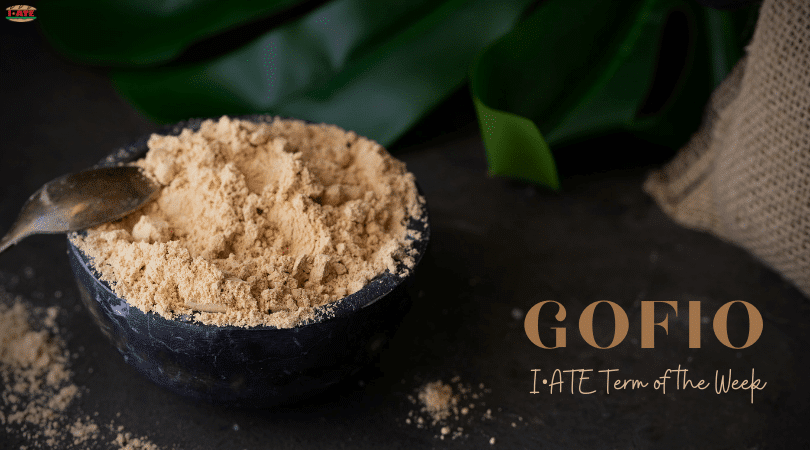 According to the Real Academia Española, in some Spanish speaking regions gofio is a kind of flour made of corn, wheat or barley. However, for those living in the Spanish region of the Canary Islands it is simply their most distinctive food.
According to the Real Academia Española, in some Spanish speaking regions gofio is a kind of flour made of corn, wheat or barley. However, for those living in the Spanish region of the Canary Islands it is simply their most distinctive food.
Indeed, gofio is a kind of flour that is thicker than usual, and mainly made of corn, wheat, or barley (pure or mixed), which can be bought in specific shops: molino de gofio (gofio mill), where basically all you can buy is this product. It can also be purchased in supermarkets. Its production follows the aboriginal traditional way: the grains of the cereals are roasted and stone-ground with the husk. Therefore its name was added to the register of protected designations of origin and protected geographical indications by the European Commission in 2014. The truth is that gofio was confirmed to be a very healthy food, as the results of a research have shown: in 2015, the International Journal of Cardiology published a paper by one of the hospitals of the islands, revealing that gofio reduces risks associated with coronary heart disease.
Gofio is usually not eaten alone, but it is mixed up with water, oil, milk, or wine, or added to any kind of food, especially soups, just like salt or sauces. And each of those ways has its specific name to be referred to. For example, gofio with soup is called “gofio escaldado”; gofio with water and cheese is “berrendo”; and gofio with wine is called “cabrilla” or “ñañas”, depending on the island you are on. It is also used to cover the rounds of the goat cheese. Gofio is usually eaten for breakfast because it is an energy boosting food. Besides, it gave birth to a new dessert: gofio mousse, a new version of the typical French dish.
Gofio and Language
The particularity of gofio does not restrict itself to gastronomy, and language alludes to it. Thus, in the Spanish variety used in the Canary Islands, you can find expressions such as “estar hecho gofio”, a metaphorical expression meaning ‘to be exhausted’ that actually has a correspondent in standard Spanish: “estar hecho polvo” (literally, ‘to be made powder’). In this region people also use the term “gofión” to say someone is ‘gluttonous’. When translating, we should then resort to techniques such as description, footnotes or borrowing, as gofio is a typical element of a specific region of one country – Spain. Actually, some chroniclers claim that the origins of the islands are related to the Berber (North of Africa) culture, where we can find this product.
In any case, the close relationship existing between gofio and the Canary Islands becomes patently clear with the idiom ‘ser más canario que el gofio’, literally ‘to be more Canarian than gofio’.
Written by Ana Bennasar, former Terminology trainee at TermCoord.
Edited by Lara Karlović, a digital marketing enthusiast with experience in social media management, SEO content writing and optimization and content marketing.

